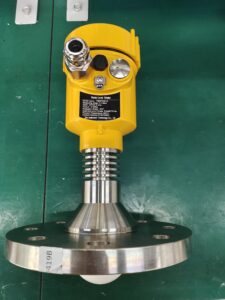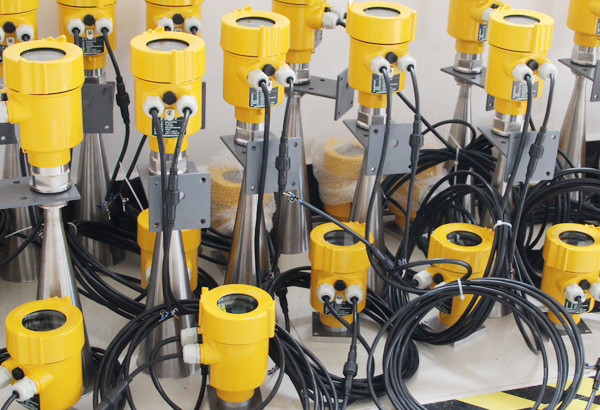As long as the use of radar level meter, then we have a problem that can not be ignored to pay attention, that is, the radar level meter range adjustment. Do you know how to determine the range? And how to modify the range?

How do determine and modify the range of a radar level meter?
A reflecting element is set at the full-scale position of the radar level meter’s beam and the distance between the reflecting element and the radar level meter is precisely measured. During the calibration process, the actual measured value of the radar level meter to the reference point is compared with the known value and the radar level meter is tuned and calibrated by the comparison value. Setting the reference point at full scale has two advantages.

1. In general, the process level will not reach the full range, and the calibration will not affect the normal production
2. The full-scale distance is short and the reflection intensity is high. This allows the reflecting element to be small enough to reduce reflector interference and ensure the strength of the reflected wave in actual level measurement.
When the tank level is corrugated: for Class B liquids with dielectric constants of 1.9~4, the larger measuring range is 5m; for Class C liquids with dielectric constants of 4~10, the measuring range is 10m, and for Class D liquids with dielectric constants greater than 10, the measuring range is 15m.

There are also a few things to note when using a radar level meter
1. The measuring range is calculated from the point where the beam touches the bottom of the tank. However, in special cases, if the bottom of the tank is concave or conical, it is not possible to measure the time when the level is below this point.
2. If the medium has a low dielectric constant, the tank bottom can be seen at low levels. In this case, to ensure the measurement accuracy, it is recommended to set the zero point at the low height of C.
3. In theory, the position of the antenna can be measured, but considering the influence of corrosion and adhesion, the final value of the measuring range should be kept at a distance of 100mm from the antenna.
4. For overflow protection, a safe distance can be defined and connected to the blind area.
Accurate use of a radar level meters is not an easy task, it requires professionalism and care to achieve the most accurate and satisfactory measurement results with it.
